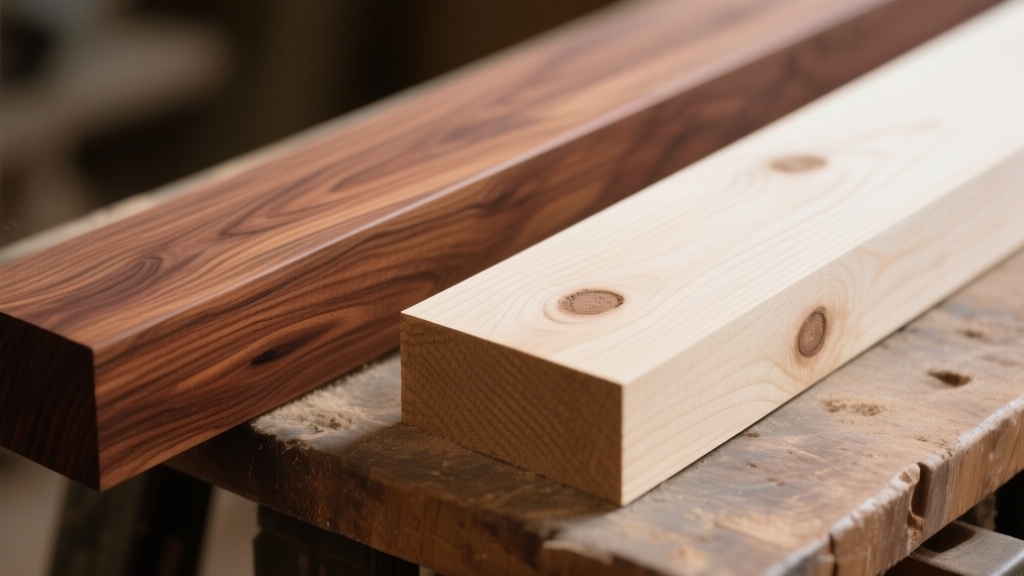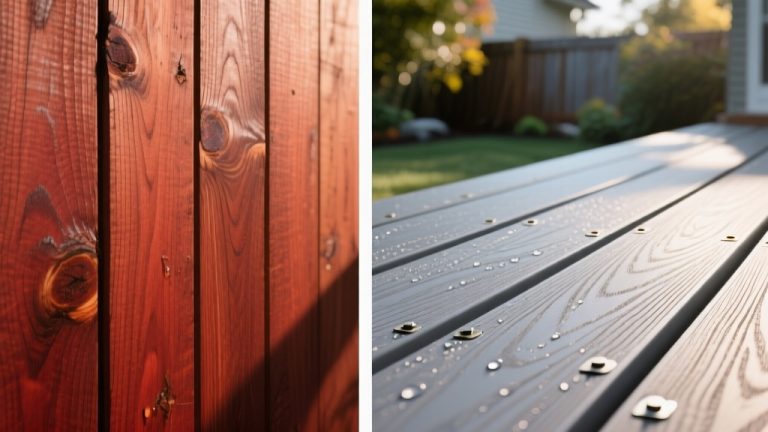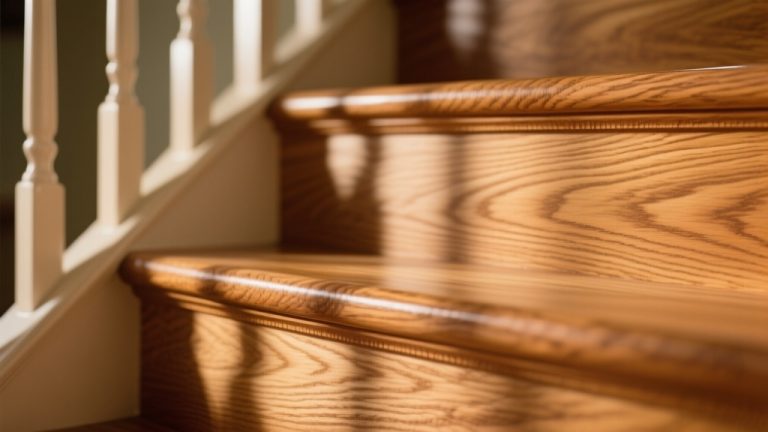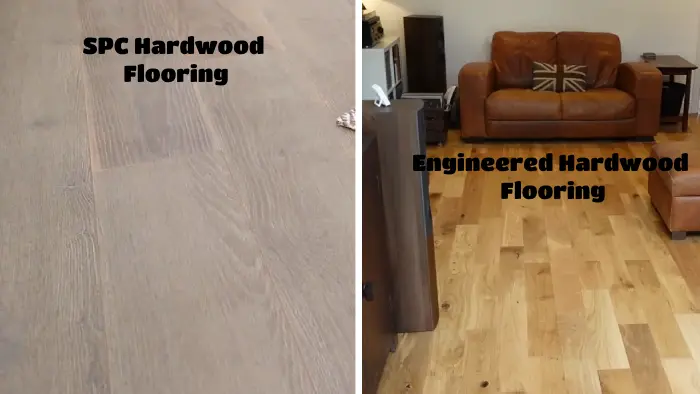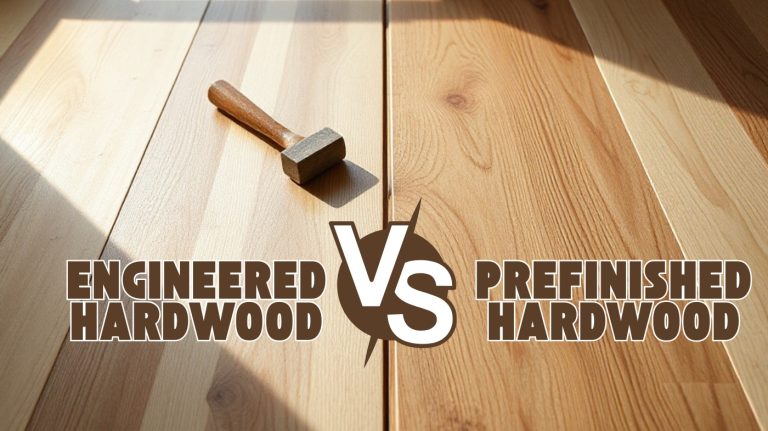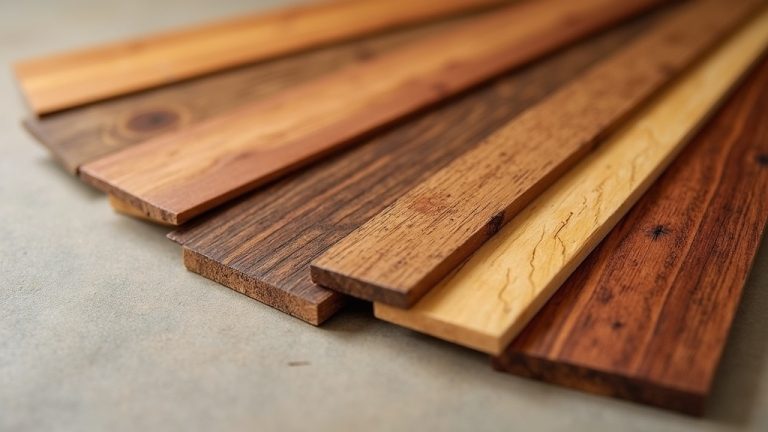Hardwood vs Softwood Lumber: Project Selection Made Simple
You’ll find hardwood comes from slow-growing deciduous trees with dense, complex grain, making it harder, more durable, and ideal for furniture or flooring. Softwood, from faster-growing conifers, offers lighter, more uniform grain and easier workability, perfect for framing or interior projects.
Hardwood generally costs more due to slower growth and processing, while softwood is more abundant and affordable. Knowing these core differences helps you pick the right lumber for your project’s needs and environment.
- Click the little arrow above, to see all your choices
- You are buying a pack of kiln dry Maple wood boards
- Each stick is 16″ long, 2″ wide, and 3/4″ thick, and you are gettng 10
Key Takeaways
- Hardwoods come from deciduous angiosperms with complex vessels, while softwoods are from coniferous gymnosperms with simpler tracheid structures.
- Hardwoods are denser, harder, and more durable, making them ideal for furniture and flooring; softwoods are lighter and easier to work with for framing and interiors.
- Softwoods grow faster and are more cost-effective, whereas hardwoods grow slower, are pricier, and have limited supply.
- Hardwoods have intricate grain patterns and natural resistance to decay; softwoods usually need chemical treatment for outdoor applications.
- Selection depends on project needs: hardwoods suit long-lasting, high-end uses, while softwoods are favored for economical, lightweight constructions.
Origin and Botanical Differences
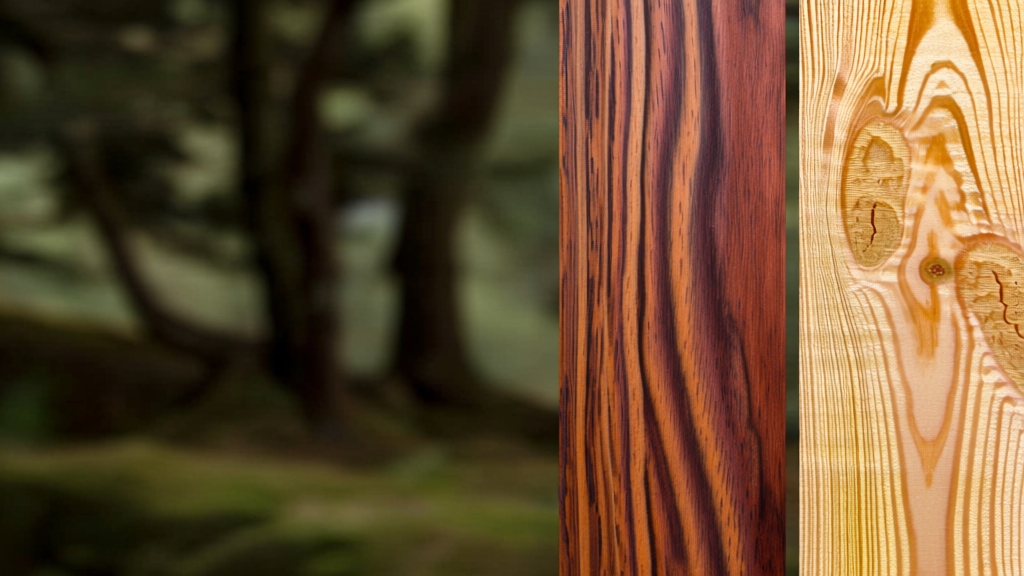
Although both hardwoods and softwoods come from trees, they originate from distinct botanical groups. Hardwoods derive from angiosperms, which are flowering plants producing seeds enclosed within ovaries like fruits or nuts.
Hardwoods come from flowering plants with seeds enclosed in fruit-like structures, unlike softwoods from non-flowering trees.
Softwoods come from gymnosperms, non-flowering plants that bear naked seeds often contained in cones. You’ll find hardwoods mostly from deciduous trees such as oak, maple, and ash, characterized by broad leaves that shed annually.
These botanical differences influence their growth patterns and wood properties. Hardwoods have vessels or pores for water transport, which softwoods lack, making this a key structural difference.
Hardwoods are generally slower-growing and denser. Their density and growth patterns affect durability and maintenance requirements compared to other materials such as engineered hardwood flooring. Understanding these origins and classifications helps you select the appropriate wood type for your specific project or application.
Cellular Structure and Wood Grain Characteristics
You’ll notice hardwoods have prominent pores and vessels that create complex grain patterns. In contrast, softwoods rely on simpler tracheids, resulting in straighter grains. This cellular difference shapes the wood’s texture and density.
Proper cleaning methods, such as using pH-neutral floor cleaners, can help preserve these natural wood characteristics. These variations directly affect both the strength and appearance of the wood.
Hardwoods tend to have a denser, tighter grain due to the presence of vessels, contributing to their greater strength and durability. Understanding these differences helps you select the right wood for your project’s structural and aesthetic needs.
Pores and Vessels
When examining wood at the cellular level, you’ll notice that hardwoods and softwoods differ profoundly in their pore and vessel structures. These differences directly affect their grain characteristics and mechanical properties.
Hardwoods contain large vessels or pores, specialized conduits for water transport measuring about 0.1 mm in diameter. These vessels are organized in aggregates or diffuse patterns, which influence density, permeability, and the grain’s optical texture.
Hardwood pores are separated by perforated plates, aligned end-to-end, facilitating efficient water conduction. However, moisture trapped in wood pores can lead to moisture-related damage if not properly managed.
In contrast, softwoods lack vessels entirely and rely on long tracheids that serve dual roles in water conduction and structural support. This results in a simpler cellular matrix with lower density. Softwoods also feature resin ducts, which don’t conduct water but provide defense against pests and pathogens.
Additionally, the presence of tyloses in hardwood vessels can block pores, affecting durability and moisture transport. Understanding these differences helps you predict wood performance in applications requiring strength, water resistance, or aesthetic appeal.
Grain Patterns Differences
Because hardwoods contain visible pores and vessels, their grain patterns appear heavier and more prominent compared to softwoods. You’ll notice hardwood grains show darker, more defined growth rings and varied textures due to shorter, tubular cells and thicker walls. The presence of pores, also known as lumen, is crucial for water conduction within hardwood cells.
Softwoods, with longer, narrower tracheids and thinner walls, display lighter, more uniform grains. The cutting method further influences grain visibility; hardwoods reveal distinct rays and pores on radial cuts, while softwoods maintain consistent patterns.
Proper care with pH-balanced cleaners helps preserve the natural appearance of wood grains. Growth rate impacts grain tightness hardwoods grow slower, yielding denser rings and intricate grain.
| Feature | Hardwood | Softwood |
|---|---|---|
| Grain Visibility | Prominent, darker, complex | Lighter, uniform, simple |
| Cell Structure | Shorter, tubular cells | Longer, narrow tracheids |
| Surface Texture | Textured, variable by cut | Smooth, consistent |
Structural Complexity Variations
The distinct grain patterns between hardwoods and softwoods stem from their underlying cellular structures. Hardwoods feature a complex arrangement of vessels, fibers, and parenchyma cells, creating visible pores that enhance density and strength. This diversity in cell types contributes to the pronounced grain and variable texture you observe.
Hardwood trees grow slowly, often taking up to 150 years to mature, which results in their dense and durable wood. The variation in grain texture influences surface feel, finish absorption, and overall aesthetic appeal.
In contrast, softwoods have a simpler structure dominated by long tracheids without visible pores, resulting in a more uniform grain pattern and lower density. Both wood types contain medullary rays, but hardwoods often have larger ones, adding to their structural complexity.
Additionally, the presence of resin ducts in softwoods, which are absent in hardwoods, further differentiates them. Understanding these cellular distinctions helps you select the right lumber based on strength, appearance, and workability for your project.
Comparing Density and Hardness Levels
Although hardwoods and softwoods differ in many ways, their density and hardness levels are key factors that influence their suitability for various applications.
Hardwoods generally have densities from 37 to 56 lb/ft³ (590–900 kg/m³). They feature complex cellular structures and pores that provide greater hardness and resistance to denting. Hardwoods’ slow growth leads to tightly spaced growth rings, contributing to their dense and durable nature. Proper maintenance and regular inspections can help preserve the quality of hardwood materials over time.
Softwoods range from 19 to 37 lb/ft³ (300–600 kg/m³). They’ve simpler tracheid cells, resulting in lower density and hardness but easier workability. Exceptions like lightweight balsa or dense yew illustrate variability within both categories.
For example, maple (43 lb/ft³) offers high hardness ideal for flooring, while pine (22–35 lb/ft³) suits construction due to moderate hardness. Density correlates closely with hardness, but cellular arrangement and moisture content also impact performance.
Durability and Resistance to Elements
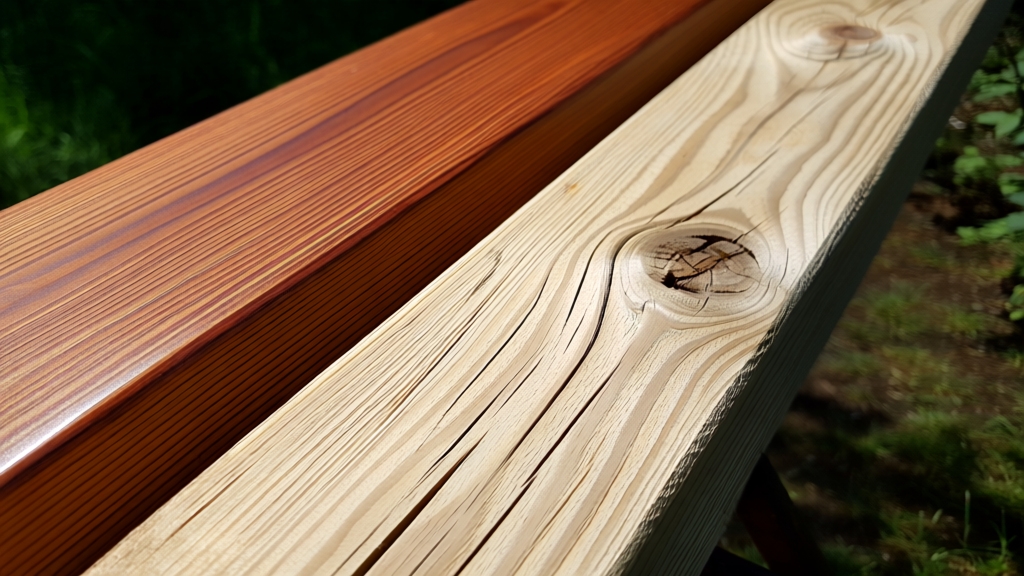
Understanding density and hardness gives you a solid foundation for choosing wood, but durability and resistance to environmental elements determine how well the material performs over time outdoors.
Hardwoods naturally resist decay, moisture absorption, and insect damage better than most softwoods due to their dense cell structure and tight grain. Their slower growth yields compact timber with inherent tannins that enhance water and pest resistance.
This slow growth also means hardwoods often require up to 150 years to mature, contributing to their dense and durable nature. Regular maintenance, such as sweeping or vacuuming, can help preserve the surface integrity of hardwood materials in outdoor structures.
Softwoods generally require chemical treatments to withstand weather, insects, and rot unless they’re species like Western Red Cedar, known for natural oils and resins that deter degradation. Both types weather to a gray patina if untreated, and all wood risks warping or cracking with prolonged moisture exposure.
For outdoor applications, you’ll find hardwoods demand less frequent maintenance, while untreated softwoods need regular sealing to maintain durability. Proper cleaning methods, including gentle sweeping or using a soft-bristled vacuum attachment, can extend the lifespan of wood finishes used outdoors.
Cost Implications and Market Availability
How do cost and availability shape your choice between hardwood and softwood lumber? Softwoods generally cost less due to faster growth and widespread plantations, making them easier to source. Choosing the right wood type may also involve considering the market prices and seasonal availability to ensure timely project completion.
Cost and availability often guide your preference, with softwoods typically more affordable and readily accessible than hardwoods.
Hardwoods, with slower growth and denser fibers, command higher prices and face more limited supply. However, exceptions like Western Red Cedar can invert typical cost patterns. Market prices fluctuate weekly, influenced by tariffs, demand shifts, and trade policies. Softwood prices have risen about 11.6% year-over-year as of August 2025.
You’ll also find hardwood machining demands increase labor costs, raising the overall price. Additionally, producing softwood lumber often involves higher raw material volume and processing costs due to its lower density and moisture content.
Seasonal and regional factors further impact availability, especially for specialty species. Understanding these variables helps you optimize your material selection, balancing budget constraints against supply realities in your projects.
Common Applications for Hardwood and Softwood
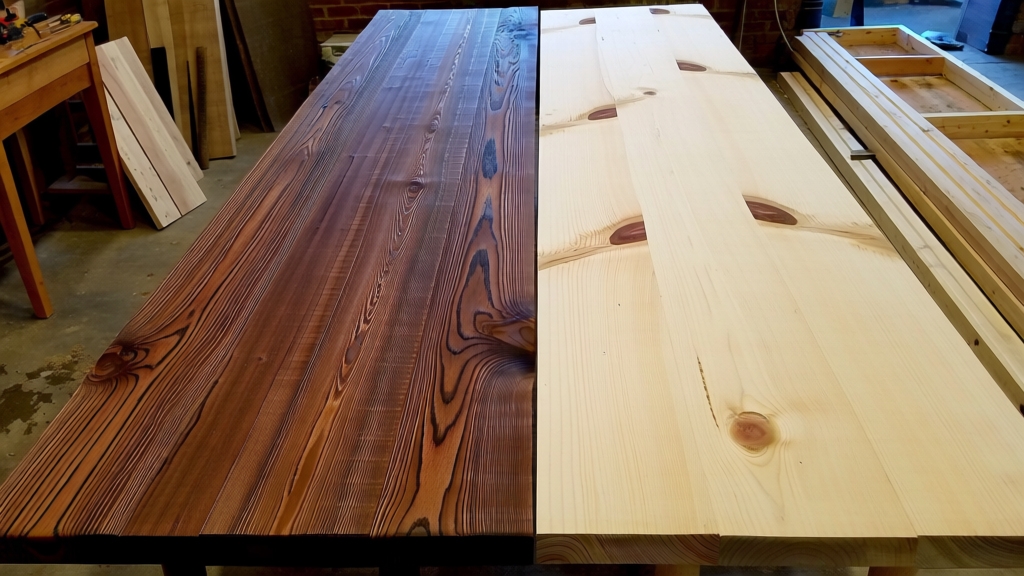
Cost and availability directly influence which type of lumber you choose, but the intended application often dictates the best fit between hardwood and softwood. Hardwood excels in durability and strength, making it ideal for heavy-duty uses like furniture frames, outdoor structures, and industrial pallets.
Its natural unique patterns and blemishes also make it popular for decorative moldings and accent walls. Proper maintenance, such as avoiding wax on certain finishes, helps preserve hardwood’s appearance and longevity.
Softwood, lighter and easier to work with, suits structural construction, DIY projects, and engineered wood products. Regular upkeep, including moisture control, is important to prevent damage and extend the life of softwood installations.
Consider these common applications to guide your choice:
- Hardwood: Furniture, flooring, outdoor decking, and crane mats where strength and longevity are critical.
- Softwood: Roof framing, interior walls, doors, window frames, and treated outdoor fencing balancing cost and moderate durability.
- Industrial use: Hardwood supports heavy loads (up to 2,000 lbs), while softwood handles lighter loads with design flexibility.
Factors to Consider When Choosing Lumber
When selecting lumber for your project, you’ll need to weigh several critical factors that affect performance and suitability. Consider growth rate and availability: softwoods grow faster and cost less, while hardwoods take longer but offer higher density.
Evaluate density and strength; hardwoods generally provide superior hardness and durability, ideal for structural integrity. Workability matters, softwoods are easier to cut and shape, reducing labor time, whereas hardwoods demand specialized tools but yield finer finishes.
Durability is essential; hardwoods resist wear and fire better, are suitable for flooring and furniture, while some softwoods require treatment for outdoor use. Finally, factor in cost and environmental impact: softwoods are cost-effective and often sustainably harvested, whereas hardwoods, though pricier, provide longevity.
Additionally, selecting lumber with an appropriate thickness and durability can significantly influence the lifespan and maintenance needs of your project.
Frequently Asked Questions
How Do Hardwood and Softwood Lumber Impact Indoor Air Quality?
You’ll notice hardwood lumber emits fewer VOCs than softwood, improving indoor air quality by reducing chemical off-gassing. Softwoods release more terpenes and resins, which can increase odors and potential irritants.
Over time, both woods’ emissions decrease, but hardwood’s denser structure also offers better moisture regulation and fire resistance, indirectly benefiting air quality. Choosing hardwood helps minimize VOC exposure, control humidity, and lower fire-related smoke risks indoors.
Are Hardwoods or Softwoods More Sustainable for Reforestation Efforts?
You’ll find softwoods more sustainable for reforestation since they grow considerably faster, often several times quicker than hardwoods, allowing for quicker forest replenishment cycles.
This rapid growth supports planned replanting programs, ensuring a steady, renewable supply. While hardwoods offer durability, their slow growth limits reforestation speed.
What Are the Environmental Impacts of Harvesting Hardwood Versus Softwood?
You’ll find hardwood harvesting consumes more diesel fuel, raising fossil emissions, while softwood operations typically use less energy. Hardwood processing emits about 41 kg CO2-equivalent per cubic meter, mainly from non-renewable energy, though they need less artificial drying.
Softwoods, being less dense, reduce drying and transport energy. Both disrupt ecosystems, but softwood plantations often have less native impact. Sustainable management helps mitigate these effects across both types.
Can Softwood Lumber Be Used for Musical Instruments Like Hardwood?
Yes, you can use softwood lumber for musical instruments, especially for soundboards. Softwoods like spruce and cedar offer superior acoustic efficiency due to their lower density and higher stiffness-to-weight ratio, allowing your instrument to vibrate responsively and project sound clearly.
While hardwoods suit bodies and necks, softwood tops provide brighter tonal qualities and dynamic range. Just guarantee proper drying and treatment to maintain stability and prevent warping over time.
How Do Finishing and Staining Differ Between Hardwood and Softwood?
Imagine staining hardwood like painting on a fine canvas, it demands prep sanding to open pores, ensuring even, rich color without blotches. Softwood, however, soaks stain unevenly like a sponge, needing a pre-stain conditioner to avoid blotchy spots.
You’ll find hardwood’s denser grain yields deeper, controlled hues, while softwood’s open structure offers lighter tones but demands more care for uniform absorption and durability in finishes.
Transform Your Next Project with the Right Lumber Choice
When choosing between hardwood and softwood lumber, don’t underestimate how essential your decision is it can make or break your entire project. Hardwood’s density and durability can withstand the harshest conditions, while softwood’s lightweight nature offers unmatched versatility and cost efficiency.
Knowing these differences lets you select the perfect lumber with surgical precision, ensuring your build lasts a lifetime. So, take this choice seriously; it’s the backbone of your success.
- Some of the species we carry are: Walnut, Red Oak, White Oak, Poplar, Cherry, Birch, Soft Maple,…
Last update on 2025-12-31 / Affiliate links / Images from Amazon Product Advertising API

